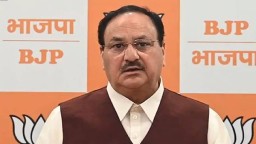CENTRE CLEARS 5G SPECTRUM AUCTION FOR 10X FASTER SERVICES
.png)
The world is going to witness a quantum change which will make almost every human impacted and force to adopt new way to live life. In a big move, Hon’ble Prime Minister Narendra Modi ji cabinet cleared the auction of 5G spectrum by the end of July 2022. A total of 72 GHz (gigahertz) of spectrum - with a validity period of 20 years - will be put to auction.
About 10 times faster than 4G, India is set to roll out the 5G services very soon. While clearing the auction government officials said. “Digital connectivity has been an important part of policy initiatives of the government through its flagship programs such as Digital India, Start-up India, Make in India and others,”
This 5G spectrum in various Low (600 MHz, 700 MHz, 800 MHz, 900 MHz, 1800 MHz, 2100 MHz, 2300 MHz), Mid (3300 MHz) and high (26 GHz) frequency bands is expected to be utilised by telecom service providers to provide high speed internet capacities which would be about almost 10 times higher than what is possible through the current 4G services. First nation to adopt on a large scale was South Korea, in April 2019, at which point there were some 224 operators in 88 countries around the world investing in the technology. South Korea, one of the first countries to roll out commercial 5G networks, now has around 36% of its population using 5G, according to tech market research firm Omdia, and this infrastructure has already brought with it self-driving cars and digital factories. The biggest difference between 4G and 5G is latency. Latency is measured in milliseconds for the travel time of internet protocol packet. Network delay is a design and performance characteristic of a telecommunications network. It specifies the latency for a bit of data to travel across the network from one communication endpoint to another. 5G promises low latency under 5 milliseconds, while 4G latency ranges from 60 ms to 98 ms. In addition, with lower latency comes advancements in other areas, such as faster download speeds.
While 4G introduced various VoIP capabilities, 5G builds upon and enhances those promises of quick potential download speeds. 4G’s download speeds hit 4-10 Mbps, and 5G’s goal is to increase that tenfold for maximum download speeds upto 10 Gbps. This will change the world forever. 5G’s multi-fold improvement over 4G speeds opens up many possibilities. But aside from its faster speeds, it also allows more users to connect to one tower, avoiding network congestion during conventions and mass gatherings.
Another big difference is OFDM encoding. OFDM is used to split different wireless signals into separate channels to avoid interference, which also provides greater bandwidth. Because OFDM encodes data on different frequencies, this can bolster download speeds, as 5G networks would have their own signal channels rather than a shared one between them. 4G uses 20 MHz channels, while 5G will use 100 MHz to 800 MHz channels.
Faster connectivity speeds, ultra-low latency and greater bandwidth will advance societies, transform industries and dramatically enhance day-today experiences. Imagine everyone by default uses only Video Calls, Person will never need to visit doctor for regular checkups, Everything will alsomt be on cloud i.e private or public but my best is that all end point devices will need less compute power but they will leverage in high speed network to connect to server with huge computing infrastructure. This will dramatically enhance the batter life and reduce power consumption. Some side indirect benefits could that we won’t need to charge a phone for 7 days to one month, No network Cables / fiber cables for high speed internet, 4K video on each device, Remote education and health will be standard and MetaVerce will be all around. One huge benefit of 5G is its potential to help organisations with their sustainability goals – from increasing efficiency and productivity at traffic junctions in smart cities to providing remote care and optimising manufacturing processes. In its Mobile Economy Report this year the GSMA said that it expects the number of 5G global connections to reach one billion in 2022 – a figure predicted to double to two billion by 2025 – by which point 5G connections will account for a quarter of all mobile connections.
THE VIEWS EXPRESSED BY THE AUTHOR ARE PERSONAL
DR AJAY DATA The writer is Co-Chair FICCI ICT and MD — Data Group





.png)
.png)
.png)
.png)
.png)
.png)










